Developing Workplace Health Resources For Employers: Nebraska’s Collaborative Approach

Download Available pdf icon[PDF – 471 KB]
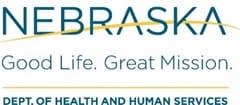
State-level efforts to promote and support workplace health can build on relationships and access to resources, but may also face many challenges in reaching employers with evidence based information and resources. These challenges range from identifying employer needs to developing appropriate and effective resources to getting those tools to thousands of employers. To address these challenges, the Nebraska Department of Health and Human Services (NE DHHS) partners with regional worksite wellness councils. The councils work directly with employers to bring their perspective to the resource development process. The councils also collect data and have a more direct understanding of these employers’ needs. NE DHHS and the councils partner to develop the resources. The councils distribute the resources to their members and offer direct additional supports and technical assistance.
Partnership With The Regional Councils
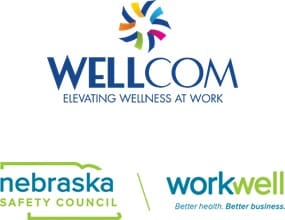
NE DHHS partners with three regional worksite wellness councils to provide worksite wellness training and technical assistance to employers in Nebraska.
- WELLCOM. Established in 1982 in Omaha, Wellness Council of the Midlands (now known as WELLCOM) was one of the first non-profit worksite wellness council in the United States. WELLCOM serves the most-populated region in the state.
- WorkWell. Formed in 1986, WorkWell was the first public health department-created worksite wellness council in the United States. In 2018 WorkWell was on track to merge with the Nebraska Safety Council. With that merge, WorkWell will have the largest number of employer members of any worksite wellness council in the state.
- Panhandle Worksite Wellness Council (Panhandle). Panhandle Worksite Wellness Council, a division of the Public Health Accreditation Board (PHAB) Accredited Panhandle Public Health District, serves a variety of businesses in the rural Panhandle region of Western Nebraska. The Council remains the only wellness council in Nebraska outside of the Lincoln and Omaha metro areas. Work from the council has been highlighted in the National Prevention, Health Promotion, and Public Health Council Annual Report.

NE DHHS Approach To Resource Development And Dissemination
NE DHHS and the councils work together to identify needs and develop and disseminate resources. The state and councils make sure the resources they develop are relevant to employers in their region and provide the most up-to-date, evidence-based interventions. They build in recommendations for policy-level changes in worksites, where possible, to provide employers with interventions that will have the most impact and be sustainable over time. NE DHHS and the councils have developed many guides and toolkits to help employers build comprehensive worksite wellness programs.
Businesses are in business for their mission, so that’s what they’re mainly focused on. So to make worksite wellness effective for them, you need to do it in ways you know will have great results and will be worth their money and time.
~ Kim Engel, Panhandle Worksite Wellness Council
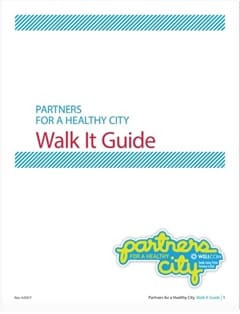
WELLCOM developed the Walk It Guide in partnership with the Douglas County Health Department and Emspace Group. The guide provides employers with tools and resources to build walking into the workplace. This guide came before the Surgeon General’s Call to Action for Walking.
Identifying Needs
NE DHHS and the councils work together to collect and synthesize statewide and council data to define gaps and employer needs across Nebraska. The councils also receive information through employer feedback and direct requests for resources.
- State-level Data. The Behavioral Risk Factor Surveillance System (BRFSS) survey helps NE DHHS to identify statewide health risks in Nebraska. Every three years NE DHHS also conducts the Nebraska Worksite Wellness Survey. This provides information on worksite wellness implementation efforts across the state and helps identify gaps for employers. NE DHHS also tracks changes in state laws and funding priorities that could affect workplace health and employers’ needs.
- Council-level Data. The councils provide employers with Health Risk Assessments, impact surveys, and organizational assessments. In some cases, the councils can help employers collect these data. For example, WorkWell helped Speedway Motors on-site for its annual worksite Health Risk Assessment and biometric screening. WorkWell helped set up stations where employees took the assessment, received their results, and met with a professional to discuss their results. The councils use the data to find out about individual employer needs, and can aggregate it to identify wider needs within their regions.
NE DHHS and the councils jointly administer the Governor’s Award every year. Developed in 2008, the award recognizes employers for their worksite wellness efforts. Employer data collected through the application process is stored in a database. This allows the state and councils to assess impact on priority identifiers such as Surgeon General Guidelines for Physical Activity compliance, obesity, and tobacco use. Policy, system and environment changes are also tracked. Businesses are taken through an incremental progression to address gaps and progress with their wellness initiatives.
What’s so cool about the Governor’s Award and its capability is [that] we have a rich database of information where we can quantify impact on a state-wide level … When somebody wants to know what’s our [NE DHHS and the councils’] impact on tobacco use, or weight loss, or on obesity … we can give them that, and we don’t think any other place has that. It really sets us apart.
~ Lisa Henning, WorkWell
- Employer-level Data. The councils can collect feedback directly from the employers they work with. Employers can provide feedback to the councils on potential issues with surveys or suggest topics for future resources. The councils then relay this information back to the state.
NE DHHS and the councils meet regularly to address identified needs. For example, when Nebraska’s state law on breastfeeding and lactation in the workplace changed, WorkWell saw an opportunity to develop a guide to state and federal laws, with recommendations for creating a lactation-friendly environment at the worksite. In another example, after NE DHHS highlighted physical activity as a focus area for health promotion activities across Nebraska, WELLCOM partnered with local health departments and nonprofit organizations. They developed the Walk It Guide to help employers understand how to incorporate physical activity into the workday.
Identifying Needs For The Nebraska Comprehensive Worksite Wellness Toolkit
In 2010, NE DHHS conducted the Nebraska Worksite Wellness Survey. The survey gathered information from Nebraska employers about policies and practices implemented at worksites and gauged employers’ wellness activities. NE DHHS used the findings to identify areas of need for employers, such as policy implementation, wellness committees, and budgeting for wellness initiatives. NE DHHS and the councils developed the Nebraska Worksite Wellness Toolkit to provide employers with evidence-based recommendations on how to build a comprehensive wellness program at their worksite. The Nebraska Worksite Wellness Survey is conducted every three years to follow up on employer activities and identify gaps in wellness initiatives.
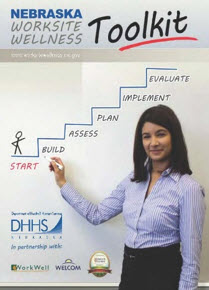
Developing Resources
Once NE DHHS and the councils decide to move forward with resource development, they come to a consensus on their overall approach. They consider each entity’s strengths, access to experts, funding and resource availability, and relevance of the topic area to their region. They determine who will spearhead resource development and which councils will help.
NE DHHS and the councils leverage their expertise and relationships with other local public health districts, councils, local organizations, and employers to help develop resources that are helpful to employers and include the most recent evidence-based ideas and policy guidelines. For example, while WorkWell led the development of Nebraska’s Guide to Lactation Support at the Worksite it reached out to experts at NE DHHS, local nonprofit organizations MilkWorks and Partnership for a Healthy Lincoln, and local businesses for input.
Panhandle developed a walking guide specific to rural employers and was able to help inform the development of the Walk It Guide, developed in large part by WELLCOM, along with local health departments and non-profits. This guide focused on recommendations for increasing physical activity to employers across the state. Table 1 lists the resources developed to date and the partners who collaborated on that resource.
Table 1: NE DHHS and the three councils work together and with local health departments and other local organizations to develop resources for Nebraska employers.
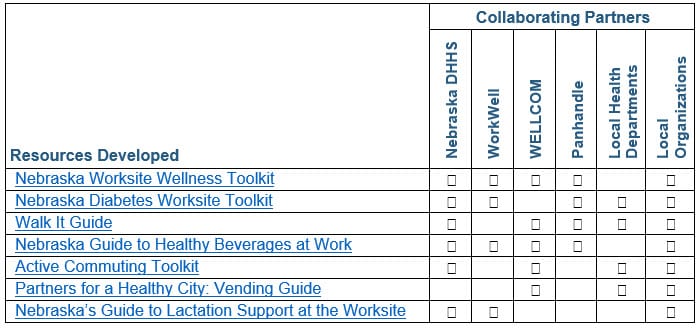
The comprehensive Worksite Wellness Toolkit was the first resource led by NE DHHS in partnership with the three worksite wellness councils. They maintained open communication throughout the development of the toolkit and asked employers in each region for input.
Sharing Resources
Because the councils have one-on-one relationships with employers, they are able to distribute the resources more effectively. The councils know the needs of employers in their area, so can prioritize the distribution of resources to those who need it the most. The councils can share resources directly with employers, make resources available online for public access, and provide on-site support. Councils provide the guides and toolkits and often walk member employers through the recommended policy changes. Councils also maintain contact even after employers’ wellness programs have matured.
The councils inform employers about new resources or information that may affect them, such as changes in state and federal laws or new findings on wellness. For example, when an employer becomes a WorkWell member, Nicole Osborne, WorkWell Services Manager, provides toolkits and guides the employer through key aspects of building a workplace wellness program. This includes engaging leadership, determining funding, and creating a wellness committee. Employers receive criteria for the Governor’s Award as a template to follow to build a comprehensive wellness program.
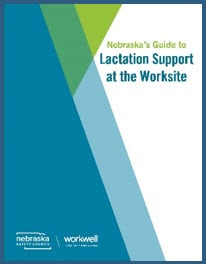
The lactation guide in particular, we really walked through policy, system, and environmental changes, and it really gives them [employers] everything that they need to know, especially with the laws being really vague in that area and Nebraska having a more strict law than the federal law. With court’s ruling last year that breastfeeding is now an extension of pregnancy, we really try to help a company understand what they could be liable for if they don’t give proper support.
~ Nicole Osborne, WorkWell
Providing Support Beyond Resources
NE DHHS and the councils recognize that meeting employer needs requires additional supports to ensure effective worksite wellness programs. They develop trainings to help employers plan and implement programs. For example, the Panhandle council provided on-site training on the National Diabetes Prevention Program to employers such as Box Butte General Hospital and Gardner, Loutzenhiser and Ryan, PC. Panhandle works with each employer to reach the people who are most geographically removed from Nebraska’s capital. Employers say their relationship with the council has helped them feel more informed about wellness initiatives in other areas.
Resource Impact And Measures of Success
Employers and their employees have benefited from the evidence-based practices and wellness interventions developed through the NE DHHS-council partnership. Since it was first conducted in 2010, the Nebraska Worksite Wellness Survey has shown an increase in self-reported worksite wellness initiatives across the state. For example, from 2010 to 2016:
- Worksites with an employee health promotion/wellness coordinator increased from 16 percent to 22 percent.
- Worksites with a wellness committee increased from 16 percent to 21 percent.
- Worksites that included dedicated funding to wellness in their budget within the previous month increased from 11 percent to 16 percent.
Challenges And Future Plans
Worksite wellness training and technical assistance is funded through several grants, such as CDC Preventive Health and Health Service (PHHS) Block Grant and CDC’s Division of Nutrition, Physical Activity, and Obesity 805, 1305, and 1422 grants. The grants specify health topics that NE DHHS and the councils can address through their worksite wellness promotion activities. Some health risks identified through surveys and assessments cannot be the main focus of resources developed through the NE DHHS council partnership. For example, employers have increasingly reported mental health and stress are a leading health risk among employees. However, NE DHHS and the councils have not been able to address this through activities under grant funding. WorkWell has made an effort to address mental wellbeing through the use of the Patient Health Questionnaire and building life balance and social/emotional programs and incentives into wellness programs.
WELLCOM, WorkWell and Panhandle can assist employers with wellness programs on topics beyond what the grants allow. For example, WELLCOM assisted the Hyatt National Sales Office with a sleep health promotion program at its worksite.
NE DHHS also wants to develop partnerships among the councils and other divisions at the health department. This would give the councils access to expertise beyond physical activity, nutrition, and breastfeeding.
Advice For Health Departments
NE DHHS offered the following advice for health departments interested in supporting the development of workplace health resources:
- Meet employers where they are. Use available data and feedback from employers to determine what resources will best address their needs.
- Identify state-specific needs for resources. If state laws mean that existing general resources won’t meet employer needs, prioritize state resources. Nebraska’s more stringent workplace lactation support laws meant a high need for a detailed resource specific to Nebraska employers.
- Recognize that employer resource needs will vary. When possible, develop resources that can be tailored to meet the needs of different types of employers (such as rural or small businesses).
Recommendations For Action
- Understand the health issues of workers in your state. If you don’t have access to employee surveys or aggregate Health Risk Assessment data, you can use Behavioral Risk Factor Surveillance System data on the adult population in your state.
- Assess the needs of employers across your state. The CDC Worksite Health ScoreCard can help you identify gaps for policy implementation at worksites.
- Become familiar with existing tools and resources that can help employers assess, plan, implement, and evaluate their workplace health initiatives.
The CDC Workplace Health Resource Center (WHRC) is a one-stop shop for organizations to find credible tools, guides, case studies, and other resources to design, develop, implement, evaluate, and sustain workplace health promotion programs. Visit https://www.cdc.gov/WHRC to find more case studies of workplace health programs in the field.